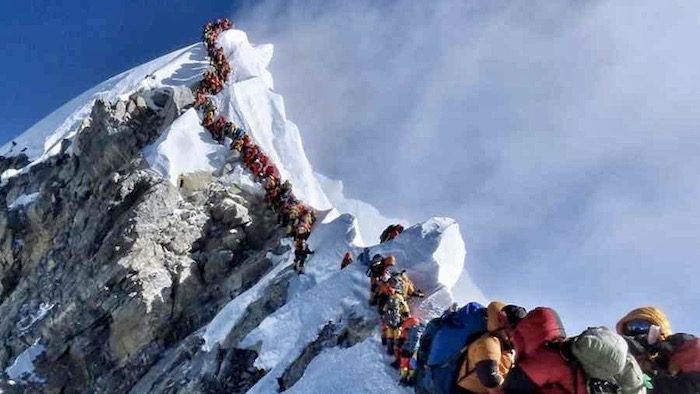Mount Everest, the world’s highest peak, has long captivated the imaginations of adventurers and mountaineers. Even though it is extremely difficult to climb Everest, it has been marked by a rich history of expeditions, each with its own triumphs, tragedies, and pioneering achievements. From the early exploration efforts to the modern-day mountaineering expeditions, the timeline of Mount Everest expeditions reflects the evolving techniques, challenges, and remarkable human endeavors in reaching the summit of the world.
Timeline of Mount Everest Expedition
Ever since the location of Everest was discovered, mountaineers have tried to climb it. To date, there have been at least 64 Everest expeditions (years that have seen climbers try to climb the mountain). These include early reconnaissance efforts and the triumphs and tragedies of modern-day mountaineering. The first real attempt to climb Mount Everest Expeditions took place in 1921.
1. 1921: Reconnaissance Expedition
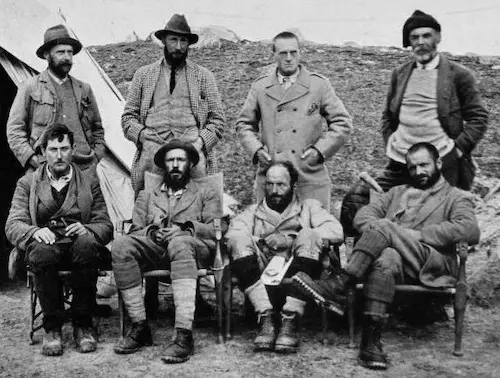
Led by Colonel Charles Howard-Bury and with Harold Raeburn as the mountaineering leader, the 1921 British Reconnaissance expedition to Mount Everest was organized and financed by the newly formed Mount Everest Committee. The team, which included notable climbers such as George Mallory, Guy Bullock, and Edward Oliver Wheeler, embarked on this expedition primarily for mapping and reconnaissance purposes. It had the aim of determining if a viable route to the summit could be found from the north side.
During the expedition, challenges arose as Raeburn’s health deteriorated, compelling Mallory to take on the responsibility of exploring the northern and eastern regions of the mountain. After enduring five grueling months of climbing in the vicinity of the mountain’s base, Wheeler made a significant discovery. He successfully explored the concealed East Rongbuk Glacier and uncovered a route leading to the base of the North Col. On September 23, Mallory, Bullock, and Wheeler achieved reached the North Col at an elevation of 7,020 meters (23,030 feet). Unfortunately, their progress was impeded by fierce winds, forcing them to retreat.
Mallory assessed the North ridge, where it intersected with the North East Ridge, and contemplated the final ascent to the summit. Although he perceived the route to be long, he believed it was still a viable option for a more rested and energetic team to conquer.
This pivotal expedition laid the groundwork for future attempts on Mount Everest. Mallory’s observation of a potential route to the summit would prove instrumental in shaping subsequent expeditions’ strategies.
2. 1922: The British Mount Everest Expedition
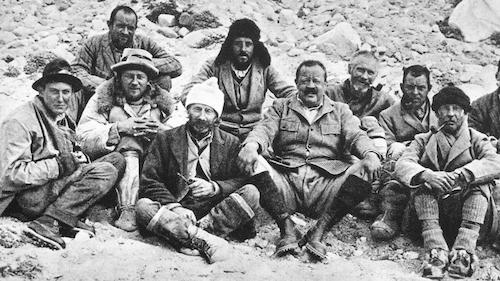
The second British Mount Everest Expedition in 1922, led by General Charles Granville Bruce and Lt-Col. Edward Lisle Strutt, marked a significant milestone in the pursuit of reaching the summit. Returning with a full-scale attempt on the mountain, the expedition included the renowned mountaineer George Mallory among its members.
On May 22, the team reached an altitude of 8,170 meters (26,800 feet) while ascending the North Ridge before deciding to retreat. This remarkable feat made them the first humans ever to climb above 8,000 meters (26,000 feet) on any mountain. The magnitude of their accomplishment becomes evident when considering that there are only 14 mountains, known as the eight-thousanders, that surpass and exceed the 8,000-meter mark. At that moment, Mallory and Strutt had surpassed the summits of all but five of those peaks.
Just one day later, George Finch and Geoffrey Bruce embarked on a daring climb up the North Ridge and Face, becoming the first climbers to utilize supplemental oxygen. Their ascent propelled them to an altitude of 8,320 meters (27,300 feet). They reached their highest camp at the rate of 900 vertical feet per hour. Additionally, Finch and Bruce achieved another milestone by becoming the first climbers to sleep at such high altitudes with the aid of oxygen.
The second British expedition to Mount Everest demonstrated the remarkable progress made in high-altitude mountaineering. The team’s achievements in surpassing the 8,000-meter threshold and utilizing supplemental oxygen set new benchmarks in the history of human exploration and mountaineering.
3. 1924: Third British Mount Everest Expedition
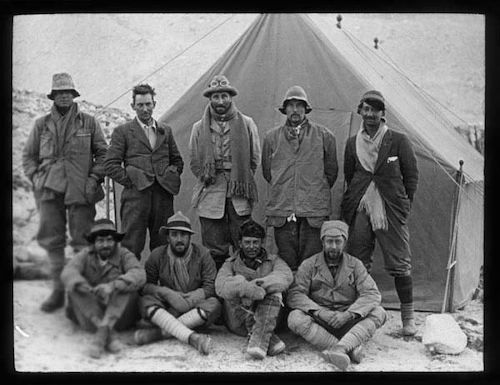
The 1924 British Mount Everest Expedition was initially led by Brigadier-General Charles Bruce but later taken over by Lt-Col. Edward Norton, with George Mallory assuming the role of climbing leader. On June 2, Mallory and Bruce set off on their summit attempt but were forced to retreat due to severe weather conditions, extreme cold, exhaustion, and the refusal of porters to proceed further. Despite their efforts, they had to return to the North Col camp.
Subsequently, on June 4, Norton and Somervell made an oxygenless summit bid in ideal weather. However, Somervell had to abandon the climb at approximately 8,534 meters due to throat trouble, while Norton continued alone. He managed to reach a height of 8,573 meters, coming within a mere 275 meters (900 feet) of the summit.
On June 8, George Mallory and Andrew Irvine departed from their high camp at 8,200 meters with the aid of Irvine’s modified oxygen apparatus. Climbing support, Noel Odell, recorded in his diary that at 26,000 feet, he witnessed Mallory and Irvine nearing the base of the final pyramid on the ridge. Unfortunately, this marked the last sighting of the two climbers, and their fate has remained a mystery. It remains uncertain whether they reached the summit or not, a question that has captivated the mountaineering community for years.
Mallory’s body was eventually discovered in 1999 within the predicted search area near the old Chinese bivouac, reigniting debates about their potential summit success. However, Irvine’s remains have yet to be found.
The enigma of Mallory and Irvine’s summit attempt continues to captivate explorers and researchers alike. Their fate remains an open question, leaving room for speculation and inspiring future generations to explore the heights of human potential and the mysteries that lie on the slopes of Mount Everest.
4. 1933: British Mount Everest Expedition

Under Hugh Ruttledge’s leadership, a major expedition aimed to conquer Mount Everest in the 1933 expedition. Despite carrying oxygen, the climbers chose not to use it due to the mistaken belief that it provided little benefit to properly acclimatized individuals. Challenged by adverse weather and illness among the team members, they established a significantly higher assault camp than in 1924.
During the initial summit attempt, Lawrence Wager and Percy Wyn-Harris intended to traverse the Northeastern ridge. However, they missed the opportunity to regain it after bypassing the First Step rather than climbing over it. Reaching the First Step at 7:00 am, they saw the Second Step from a lower vantage point, approximately 30.5 meters (100 feet) below. Wyn-Harris deemed it “unclimbable.” After crossing the Great Couloir, they decided to turn back due to unfavorable snow conditions and the lateness of the hour.
Another attempt followed, led by Eric Shipton and Frank Smythe, using the same route. However, Smythe, continuing alone as Shipton fell ill, could not surpass their previous highest point.
5. 1934: Maurice Wilson
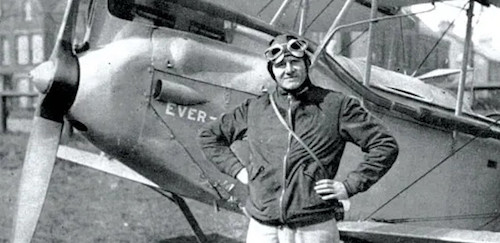
Maurice Wilson, a British eccentric, embarked on a solo mission to summit Everest. Despite limited flying experience, he illegally flew from Britain to India, then journeyed on foot through Darjeeling and into Tibet with the assistance of Sherpa guides. Lacking climbing expertise and equipment, Wilson relied on spiritual aid to reach the summit, intending to signal his success to the monks at Rongbuk monastery using a shaving mirror.
It is unlikely that he reached the North Col at 7,000 meters. Wilson’s body and diary were discovered wrapped in a tent in 1935 by another British expedition. While his body has been found multiple times, including in 1960 by a Chinese expedition, it has decayed due to temperatures above freezing at the head of the East Rongbuk Glacier, unlike Mallory’s preserved body.
6. 1935 British Mount Everest Reconnaissance Expedition
During the monsoon season, Shipton led a small reconnaissance expedition to prepare for the following year’s climb. They scaled smaller peaks near Everest and explored alternative routes, such as the West Ridge and entry via Lho La into the Western Cwm.
However, these routes were deemed impractical. Shipton concluded that an ascent from the Western Cwm would be feasible if accessed from the Nepalese side. This route would later be used for the successful 1953 expedition. Notably, this expedition marked Tenzing Norgay’s first visit to Everest, where he served as one of the “porters.”
7. 1936 British Mount Everest Expedition
Ruttledge’s second expedition made limited progress due to an exceptionally early monsoon season.
8. 1938 British Mount Everest Expedition
Following his participation in the 1935 reconnaissance expedition, renowned British mountaineer Bill Tilman played the role of leader for the 1938 Everest expedition. The team aimed to ascend via the North Col, attempting the climb from both the main Rongbuk Glacier in the west and the East Rongbuk.
They achieved a significant milestone by reaching the North Col from the west for the first time. Pushing further, they climbed beyond 8,290 meters without supplemental oxygen. However, adverse weather conditions and illness compelled them to descend before reaching the summit.
9. 1947
In March 1947, Earl Denman, a Canadian engineer, along with Norgay and Ang Dawa Sherpa, ventured into Tibet unlawfully with the intention of climbing the mountain. However, their endeavor came to an end when they encountered a storm at 22,000 feet (6,700 meters). Acknowledging their defeat, Denman made the decision to retreat, and all three safely turned back.
10. 1950
With Nepal opening its borders to foreigners, a new opportunity arose for mountaineering expeditions. Prior attempts on Mount Everest had been made from Tibet, approaching from the north face. However, access to this route was cut off to western expeditions in 1950 following China’s takeover of Tibet.
In 1950, Bill Tilman led a small team consisting of Charles Houston, Oscar Houston, and Betsy Cowles on an exploratory expedition. They ventured through Nepal, pioneering the route that would later become the standard approach to Everest from the south.
11. 1951
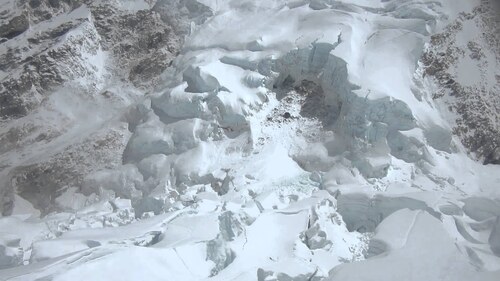
- Under the leadership of Shipton, a British expedition consisting of Edmund Hillary, Tom Bourdillon, W. H. Murray, and Mike Ward to explore a new route via the southern face of Everest. On September 30, at an elevation of 20,000 feet (6,100 meters) on Pumori, Shipton and Hillary gained a vantage point to observe the entire Western Cwm. They concluded that it was feasible to ascend from the top of the Cwm to the west face of Lhotse, followed by a traverse to the South Col. The team dedicated the following month to reaching the Western Cwm by navigating through the Khumbu Icefall. Unfortunately, their progress was thwarted near the top of the icefall when they encountered a crevasse measuring 100-300 feet wide.
- With limited mountaineering experience and minimal equipment, Klaus Becker-Larsen (Danish Climber), accompanied by two Sherpas, attempted to ascend the North Col. However, they were compelled to retreat due to the danger of rockfall. Despite the challenges, Becker-Larsen became the first European to reach Nangpa La, marking a significant milestone in his mountaineering journey.
12. 1952
- A Swiss expedition, led by Edouard Wyss-Dunant, attempted to climb via the South Col and southeast ridge. They found a route through the icefall, surpassing the crevasse that had halted a previous expedition. Raymond Lambert and Tenzing Norgay reached Camp VII at 27,500 feet (8,400 meters), but unsettled weather forced them to turn back just 150 meters from the south summit of Everest.
- Led by Gabriel Chevalley, the Swiss embarked on another expedition in the autumn of 1952. Alongside Chevalley, the team included Raymond Lambert and Tenzing Norgay from the previous spring expedition, as well as five new climbers. However, their progress was halted by unfavorable weather conditions in late November, preventing them from ascending beyond an altitude of 8,100 meters.
- Reports emerged in Western climbing journals claiming that the Soviet Union had undertaken an expedition from Tibet in October, intending to summit Mount Everest ahead of the upcoming British expedition. Allegedly led by Pavel Datschnolian, the endeavor was said to have ended tragically with the deaths of Datschnolian and five other team members. However, both Russian and Chinese authorities have consistently refuted the existence of such an attempt. No tangible evidence or records of a person named Pavel Datschnolian have been discovered, casting doubt on the authencity of these reports.
13. 1953 British Expedition
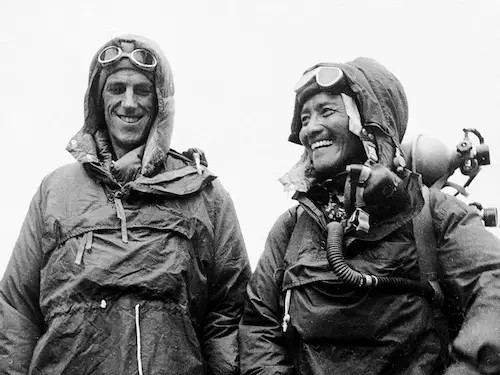
The 1953 British Mount Everest Expedition, was the ninth British expedition, and was led by John Hunt and financed by the Joint Himalayan Committee. They planned for multiple attempts on the summit. The first pair, Charles Evans and Tom Bourdillon, reached the South Summit but faced oxygen equipment issues and time constraints.
Two days later, using open-circuit oxygen sets, Edmund Hillary and Tenzing Norgay successfully reached the summit on May 29, 1953, via the South Col route. They took photographs, buried items, and descended. There was speculation about who had reached the summit first, later confirmed to be Hillary.
The news of their success coincided with Queen Elizabeth II’s coronation. Hillary and Hunt learned they had been knighted upon returning to Kathmandu.
14. 1954 and 1955: Proposed French and Swiss Expedition
If the 1953 British expedition failed to reach the summit of Everest, the French had permission to undertake their own expedition in 1954. Similarly, the Swiss were granted permission for an Everest expedition in either 1955 or 1956.
15. 1956 Swiss Everest Expedition
The 1956 Swiss expedition accomplished remarkable feats on Everest. Ernst Reiss and Fritz Luchsinger made the first ascent of Lhotse, the fourth highest peak, on May 18. The team established camp 6 on the South Col and camp 7 at 8,400 meters (27,600 feet).
On May 23, Ernst Schmied and Jürg Marmet successfully reached the summit of Everest, followed by Dölf Reist and Hansruedi von Gunten on May 24. Together, these climbers formed the next group to conquer the peak of Everest.
16. 1960: The Chinese Mount Everest Expedition
In 1960, a Chinese team comprising Wang Fuzhou, Qu Yinhua, and Tibetan climber Gongbu (Konbu) made a claim of reaching the summit of Everest via the North Ridge.
Initially, their assertion was met with skepticism in mountaineering circles due to the absence of photographic evidence. However, further research and interviews have convinced many experts that the Chinese team did indeed successfully climb Everest from the north in 1960.
17. 1962
Woodrow Wilson Sayre and three companions embarked on an unauthorized expedition from Nepal into China. They reached a height of approximately 7,620 meters (25,000 feet) on the North Ridge but were forced to retreat due to exhaustion. Sayre chronicled their endeavor in a book titled “Four Against Everest.”
18. 1963 Everest Expedition
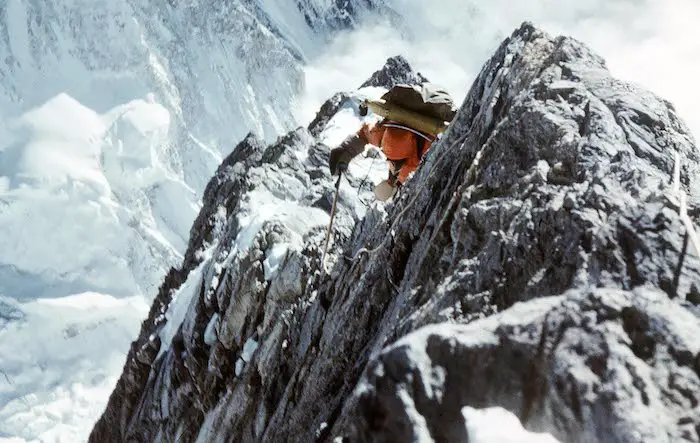
Jim Whittaker, the first American to ascend Everest, achieved this feat accompanied by Nawang Gombu Sherpa, who later became the first person to climb Everest twice in 1965.
Additionally, on May 22, Americans Tom Hornbein and Willi Unsoeld completed the first ascent via the Hornbein Couloir. Notably, their descent through the South Col marked the first traverse of Everest.
19. 1965
Led by Lieutenant Commander M.S. Kohli, a 21-member Indian expedition accomplished a significant milestone on May 20. Nine individuals from the team successfully reached the summit of Everest. Notably, Nawang Gombu, who had previously done the 1963 American Mount Everest West Ridge Expedition, became the first person to achieve the feat twice.
20. 1969
In preparation for the 1970 summit expedition, two reconnaissance expeditions were carried out. Their main focus was to survey the unexplored southwestern face of the mountain. By October 31, multiple camps were set up along the southwestern face, with the team reaching an impressive altitude of 8,000 meters (26,000 feet).
21. 1970
- Yuichiro Miura accomplished a remarkable feat on May 6 by skiing down from the South Col of Everest. His extraordinary achievement was documented in the film “The Man Who Skied Down Everest,” which made history as the first sports film to win an Academy Award for Best Documentary Feature.
- A Japanese team made an independent effort to establish a new summit route along the Southwest Face of Everest. Unfortunately, their attempt ended in failure. Tragically, six Sherpa team members lost their lives in an avalanche, one porter was killed by a serac icefall, and climber Kiyoshi Narita passed away due to a heart attack.
22. 1971: International Expedition
23. 1972: European Expedition
24. 1973
On October 26, Hisahi Ishiguro and Yasuo Kato achieved the distinction of making the first ascent after the monsoon season.
25. 1974: French Mount Everest Expedition
In a French expedition on September 9, 1974, an attempt was made on the West Ridge Direct route of Mount Everest. Tragically, an avalanche claimed the lives of six climbers as they were making their way towards the summit. This unfortunate event increased the total number of fatalities on the mountain to 36.
26. 1975 Mount Everest Expedition

- Junko Tabei of Japan made history on May 16 as the first woman to reach the summit of Everest. Prior to her achievement, Tabei and her climbing partner, Sherpa Ang Tshering I, were among the seven Japanese climbers injured in an avalanche at Camp II on May 4. Tabei’s successful ascent made her the 36th climber to conquer the summit. In 1992, she also became the first woman to complete the Seven Summits.
- On May 27, a Chinese team comprising nine members successfully reached the summit of Everest. During their expedition, they installed a ladder at the Second Step, a crucial passage on the North Ridge route that remained in use until 2008. Notably, Phanthog became the first woman to ascend Everest from the Tibetan side. Additionally, the team measured the altitude of the summit to be 8848 meters.
- On September 24, a British expedition led by Chris Bonington accomplished the first ascent of the Southwest Face of Everest. Doug Scott and Dougal Haston became the first British climbers to reach the summit. Previously, the Rock Band, a series of cliffs on the southwest face, had thwarted five expeditions from 1969 to 1973. However, on September 20, Nick Estcourt and Paul Braithwaite successfully climbed the Rock Band. The summit was first reached on September 24 by Scott and Haston, who endured the highest-ever bivouac when they were stranded on the South Summit during their descent. On September 26, Peter Boardman and Sirdar Pertemba Sherpa successfully attempted a second ascent. Tragically, Mick Burke, a BBC cameraman who climbed alone after Martin Boysen turned back, did not return from the summit.
27. 1976
- On May 16, an expedition led by Tony Streather and comprised of British Army and Royal Nepalese Army members achieved a significant feat. Special Air Service soldiers Bronco Lane and Brummie Stokes successfully ascended the South West face of Everest.
- As part of the American Bicentennial Everest Expedition, Bob Cormack and Chris Chandler made a memorable achievement on October 8, 1976. They successfully reached the summit of Everest using the South Col Route.
28. 1978 Everest Expedition
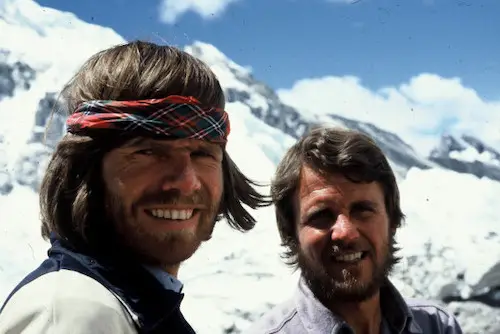
- Reinhold Messner of Italy and Peter Habeler of Austria made history on May 8, 1978. They became the first climbers to reach the summit of Everest without the assistance of supplemental oxygen. Their successful ascent followed the challenging southeast ridge route.
- On October 16, 1978, Wanda Rutkiewicz accomplished several remarkable milestones. She became the third woman ever to reach the summit of Mount Everest, as well as the first Polish climber and the first European woman to achieve this feat.
29. 1979
- During the Yugoslav West Ridge expedition, a new route up the entire West Ridge from Lho La was established. The summit was successfully reached by two separate teams. The first team, comprised of Andrej Štremfelj and Nejc Zaplotnik, accomplished this on May 13, 1979. Two days later, Stipe Božić, Stane Belak, and Ang Phu (Sherpa) reached the summit as well. Sadly, during the descent, Ang Phu fell and lost his life, while Stane Belak and Stipe Božić had to bivouac at 8,400 meters.
- The 1979 Swabian Expedition, led by a German team, experienced tragic losses during their endeavor. Ray Genet and Hannelore Schmatz unfortunately lost their lives.
30. 1980: The First Winter Ascent
- Andrzej Zawada’s Polish team accomplished the first winter ascent of Everest on February 17, with climbers Leszek Cichy and Krzysztof Wielicki. This marked the inaugural winter summit of any of the world’s fourteen 8000-meter peaks.
- On May 19, Polish climbers Andrzej Czok and Jerzy Kukuczka established a new climbing route on the south face of Everest.
- Reinhold Messner of Italy made history on August 20 by becoming the first person to climb Everest solo and without oxygen. He pioneered a new route on the north col/face, following the path set by Finch in 1922. Messner embarked on a three-day solo journey along the Northwest route from his base camp at 6,500 meters.
- Takashi Ozaki and Tsuneo Shigehiro of Japan achieved the first complete ascent of the North Face of Everest.
- The 1980 Everest Basque Expedition, representing the Basque Country, successfully reached the summit, marking their first triumphant ascent of Everest.
31. 1982
- The first Soviet expedition climbed a challenging new route on the Southwest Face, with 11 climbers successfully reaching the summit.
- UK: Led by Bonington, a British expedition attempted the full length of the northeast ridge but did not reach the summit. Two climbers, Peter Boardman and Joe Tasker, went missing during their final attempt.
- The 1982 Canadian Mount Everest Expedition faced early tragedy with the death of their cameraman and three Sherpas. Despite setbacks, Laurie Skreslet and two Sherpas reached the summit on October 5, followed by Pat Morrow two days later.
- USA: Marty Hoey tragically fell to her death from the North Side on May 15. She was expected to become the first American woman to summit Everest, which was achieved six years later.
- Yasuo Kato, an experienced Japanese climber, made a second winter ascent alone from the South Summit. He became the first climber to summit Everest in three different seasons, while encountering challenging weather conditions with Toshiaki Kobayashi during their descent.
32. 1983
On October 8, Lou Reichardt, Kim Momb, and Carlos Buhler achieved the groundbreaking feat of being the first to summit the East Face. The following day, Dan Reid, George Lowe, and Jay Cassell also reached the summit.
33. 1984

- On April 20, Bulgarian climber Hristo Prodanov achieved the remarkable feat of reaching the summit via the West Ridge alone and without oxygen. Sadly, he lost his life during the descent, becoming the first Bulgarian to summit Everest and the second to do so via the West Ridge. On May 8 and 9, four more climbers—Metodi Savov, Ivan Valchev, Nikolay Petkov, and Kiril Doskov—successfully reached the summit via the West Ridge route and descended via the South Col route.
- In India, on May 23, Bachendri Pal made history by becoming the first Indian woman to summit Mount Everest using the standard southeast ridge route.
- On October 3, Australian climbers Tim Macartney-Snape and Greg Mortimer accomplished the first Australian ascent without supplemental oxygen. They followed a new route known as “White Limbo” on the North Face.
- On October 20, Phil Ershler etched his name in history as the first American to conquer Everest’s North Face.
34. 1985
On August 28, Òscar Cadiach, Antoni Sors, and Carles Vallès made history as the first Catalans to summit Mount Everest. Their remarkable achievement was accomplished along the challenging northeast ridge without the use of supplemental oxygen.
35. 1986
- Switzerland: In an impressive feat, Erhard Loretan and Jean Troillet tackled the North Face of Everest in a daring manner. They completed the ascent without the use of oxygen, ropes, or tents in a remarkable 42-hour single push. To add to their accomplishment, they descended quickly, glissading down in less than five hours. Their unique climbing style, which involved mostly nighttime climbing and no backpacks above 8,000 meters, earned them the nickname “night naked.”
- Canada: On May 20, Sharon Wood made history as the first North American (Canadian) woman to summit Mount Everest. She achieved this milestone alongside Dwayne Congdon.
36. 1988
- France: Jean-Marc Boivin achieves the first paraglider descent of Everest. Descending to Camp II from an altitude record of 2,948 meters.
- France: Marc Batard sets a new record for the southeast route ascent. Completing it without supplementary oxygen in just 22 hours and 30 minutes from Base Camp to the summit.
- China, Japan, Nepal: A joint team from these countries successfully reaches the summit from both the north and south sides simultaneously and performs a live worldwide broadcast of their achievement.
- United States: Stacy Allison becomes the first American woman to summit Everest.
- New Zealand: Lydia Bradey becomes the first woman to climb Everest without oxygen via the SE ridge, doing so alone after initially facing disputes from teammates.
- Czechoslovakia (Slovakia): Jozef Just climbs Bonnington’s SW Face route without oxygen but tragically disappears with three teammates during a descent in a storm.
- Nepal: Sungdare Sherpa becomes the first person to summit Everest five times on May 10, 1988.
- USA/ Canada/ UK: Stephen Venables becomes the first Briton to summit Everest without oxygen, while Robert Anderson, Ed Webster, and Paul Teare reach the South Summit via a new route up the Kangshung Face.
- Australia: Jon Muir becomes the first Australian to reach the summit of Everest without a sherpa.
37. 1989
- May 10: Yugoslav expedition via Southeast Ridge. Stipe Božić, Viki Grošelj, Dimitar Ilievski-Murato, and Sherpas Sonam and Agiva all successfully summit Everest. Sadly, Ilievski-Murato does not return.
- Mexico Nepal May 16: Ricardo Torres-Nava and Sherpas Ang Lhakpa and Dorje reach the summit with supplementary oxygen. Marking the first Mexican and Latin American ascent in an American expedition.
- Mexico July 18: Carlos Carsolio reaches the summit without bottled oxygen, achieving his fifth of fourteen eight-thousanders.
38. 1990
- On October 7, Marija and Andrej Štremfelj achieved the historic feat of becoming the first married couple to reach the summit.
- New Zealand Peter Hillary, son of Edmund Hillary, followed in his father’s footsteps and became the first second-generation climber to reach the summit.
- Australia’s Tim Macartney-Snape accomplished a remarkable feat by trekking and climbing from sea level to the top of Mount Everest, marking the first complete “Sea to Summit” expedition.
- 1990 Royal Nepalese Army Expedition – South East Ridge. Four people summited (out of 50), but only one person from the Nepalese Army.
39. 1992
Chile witnessed two rival expeditions led by Rodrigo Jordan and Mauricio Purto, resulting in the second ascent via Kangshung and the first South American climbers reaching the summit.
Cristian Garcia-Huidobro claimed the title of the first Chilean and South American climber to reach the summit, accompanied by a disputed incident of confrontation with Purto’s team.
40. 1993 (Nepali Woman’s Everest Expedition)

- April 22: Pasang Lhamu Sherpa – First Nepali woman to summit Mount Everest, tragically died during descent.
- October 7: Ramón Blanco – Oldest person to reach the summit at 60 years and 160 days (Spain/Venezuela).
- India: Santosh Yadav – First woman to climb Mount Everest twice within a year, achieving the feat in May 1992 and May 1993.
41. 1995
- May 14: Waldemar Niclevicz and Mozart Catão – First Brazilian ascent of Mount Everest. Niclevicz summited again in 2005.
- United Kingdom: Alison Hargreaves became the first woman and second person (after Reinhold Messner) to climb Everest alone without oxygen or Sherpa support.
- Japan: Kiyoshi Furuno and Shigeki Imoto – First climbers to summit via the full Northeast Ridge, previously unclimbed.
- Mark Pfetzer – At 16 years old, became the youngest climbers to reach the summit of Everest at that time.
42. 1996

The 1996 Mount Everest Disaster was a tragic event that unfolded on May 10-11, 1996. It resulted in the deaths of eight climbers on Mount Everest. Two guided expeditions, one led by Rob Hall of Adventure Consultants and the other led by Scott Fischer of Mountain Madness, encountered severe weather conditions and delays near the summit.
Due to a combination of factors, including a late start, crowded conditions, and a fierce storm, the climbers faced life-threatening challenges. Several climbers, including experienced mountaineers and clients, struggled with exhaustion, altitude sickness, and frostbite. Tragically, eight individuals lost their lives (Yasuko Namba, Doug Hansen, Andy Harris) during the descent. This also included renowned guides Rob Hall and Scott Fischer.
The events of the 1996 Mount Everest Disaster garnered significant media attention and raised important questions about the risks and commercialization of guided expeditions. The disaster led to changes in safety protocols and a renewed focus on the importance of experienced leadership and decision-making in high-altitude mountaineering.
- India: In 1996, tragedy struck the Indo-Tibetan Border Police North Col expedition from India. Sadly, three members, namely Subedar Tsewang Samanla, Lance Naik Dorje Morup, and Head Constable Tsewang Paljor, known as Green Boots, lost their lives on the Northeast Ridge.
- Nepal: Ang Rita Sherpa (Snow Leopard of Nepal) made history as the first person to summit Mount Everest a remarkable ten times, accomplishing this feat between May 7, 1983, and May 23, 1996.
- Italy: Hans Kammerlander set a record time of climbing for 17 hours from base camp to the summit. He undertook this challenging climb alone and without the assistance of supplementary oxygen. Additionally, Kammerlander skied down from an altitude of 7,800 meters.
- Sweden: Göran Kropp cycled from Sweden to Everest, climbed it without assistance or oxygen, and biked most of the way back.
43. 1998
- USA/ UK: Tom Whittaker, a naturalized American and British-born, became the first disabled person to reach the summit despite having his right foot amputated.
- Nepal: Kazi Sherpa achieved the fastest solo summit via the southeast ridge (South Col) without supplemental oxygen, completing the ascent in 20 hours 24 minutes, breaking a previous record by Marc Batard.
- UK: Bear Grylls, at the age of 23, became one of the youngest Britons to successfully summit Everest on May 16.
- Uzbekistan: Ristam Radjapov and a team of 11 alpinists, including Svetlana Baskakova, became the first climbers from Uzbekistan to summit Everest in 1998. Subsequently, Ilyas Tukhvatullin and Andrey Zaikin also reached the summit.
44. 1999
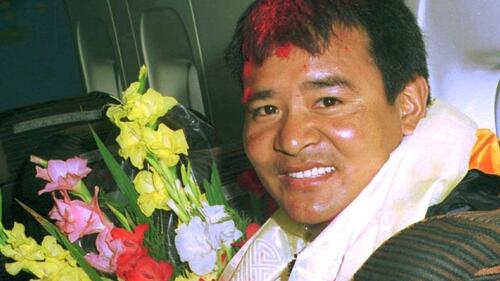
- Nepal: Babu Chiri Sherpa from Nepal spent 21 hours on the mountaintop.
- South Africa: Cathy O’Dowd became the first woman to summit Everest from both the northern and southern routes.
- Mexico: Elsa Ávila became the first Mexican and Latin American woman to reach the summit on May 5.
- Japan: Ken Noguchi, at the age of 25 years and 265 days, became the youngest climber to reach the highest peaks on all seven continents.
- Portugal: João Garcia became the first Portuguese climber to conquer Mount Everest on May 18.
- Ecuador: Iván Vallejo became the first Ecuadorian to summit Everest without using bottled oxygen. This marked his third eight-thousander out of a total of fourteen.
- Georgia: Mamuka Tsikhiseli from Georgia climbed from the Tibet side and reached the summit on May 26.
- Georgia: Lev Sarkisov from Georgia became the oldest person to summit Everest at the age of 60 years and 160 days on May 12.
- Greece: Constantine Niarchos, son of billionaire Stavros Niarchos, became the first Greek to summit Mount Everest.
- UK, USA, Germany: On the north side of Mount Everest, during a search expedition led by Simonson and Hemmleb, Conrad Anker discovered George Mallory’s body at 8,165 m. No camera was found. Rope marks around Mallory’s waist suggest a possible fall with Irvine.
45. 2000
- Pakistan: On May 17, Nazir Sabir became the first Pakistani to summit Mount Everest at 0730 hours.
- Netherlands: On May 17, Frits Vrijlandt became the first Dutch to summit via the North side at 11:20 hours.
- Slovenia: On October 7, Davo Karničar achieved the first uninterrupted ski descent from the top to the base camp in five hours, reaching speeds of 75 mph.
- Poland: Anna Czerwińska became the oldest woman to summit Mount Everest at the age of 50 on May 22, 2000.
- Spain/ Andalusia: Manuel González and Iván Jara, accompanied by cameraman Juanjo Garra, became the first mountaineers from Andalucia to reach the summit on May 22 at 9:30 in the morning.
46. 2001
- Nepal: On May 23, Temba Tsheri Sherpa became the youngest person to reach the summit at the age of 16 years and 14 days.
- France: On May 24, Marco Siffredi of France became the first person to descend on a snowboard at the age of 22.
- United States: On May 25, Erik Weihenmayer became the first blind person to reach the summit at the age of 32.
- Colombia: Manuel Arturo Barrios and Fernando González-Rubio became the first Colombians to reach the summit.
47. 2002
- Russia: Ural Mountaineering Expedition from Yekaterinburg, led by Gennady Kirievskiy, successfully summited Everest via the North side on May 18, 2002. All 9 members of their expedition reached the summit.
- Japan: Tamae Watanabe became the oldest woman to summit Everest at the age of 63 years and 177 days on May 16, 2002 (she later set the record again in 2012).
- United States: Phil and Susan Ershler became the first couple to climb the Seven Summits after reaching the Everest summit on May 16, 2002.
48. 2003
- United States: Dick Bass, the first American to climb the Seven Summits, attempted to reclaim his title at the age of 73 in 2003 but made it only to base camp. His teammates included Jim Wickwire and John Roskelley.
- Japan: Yuichiro Miura became the oldest person to reach the summit at 70 years and 222 days on May 22, 2003.
- Nepal: Sherpa Pemba Dorji made the world’s fastest ascent in 12 hours 45 minutes on May 23, 2003.
- Nepal: Sherpa Lhakpa Gelu broke Dorji’s record three days later with a time of 10 hours 56 minutes. The tourism ministry confirmed Gelu’s record in July.
- Nepal: Ming Kipa, at the age of 15, became the youngest woman to climb Everest in 2003, also becoming the youngest person from 2003 to 2010.
49. 2004

- Nepal: Pemba Dorje Sherpa claimed the fastest oxygen-supported ascent via the southeast ridge (South Col) in 2004, completing the 17 km route from base camp to the summit in 8 hours 10 minutes. However, his record was disputed by renowned Everest chronicler Elizabeth Hawley and other mountaineers in Nepal. Pemba was later arrested for his alleged involvement in an unrelated swindling scandal and his record was rejected and removed by the Nepal Government in 2017. Robert Jen also made history on this climb as the first Asian American to reach the summit of Mt. Everest.
- Russia: Led by Victor Kozlov, a 13-member Russian expedition successfully climbed Everest via the North Face, with team members summiting between May 29 and June 1, 2004.
- Greece: The first Greek expedition consisted of 5 climbers who reached the summit from the South side, and 3 climbers who reached the summit from the North.
50. 2005
- China: A Chinese government-sponsored survey team consisting of 24 members successfully reached the peak on May 22. Their objective was to anchor surveying equipment for the remeasurement of the summit height. Various methods were employed to assess snow and ice thickness and compare it with historical data.
- France: On May 14, a significant milestone was achieved as a Eurocopter AS-350 B3 helicopter made a historic landing on the summit of Mount Everest. This feat was repeated the following day, marking the first-ever helicopter landings on the mountain’s peak.
- Nepal: Pem Dorjee Sherpa and Moni Mulepati from Nepal made history by becoming the first couple to marry on the top of Mount Everest. On May 30, 2005, at 29,035 feet, they reached the summit and exchanged vows. Their marriage ceremony during the Rotary Centennial Everest Expedition created a remarkable milestone in the climbing world.
51. 2006 Everest Expedition

- New Zealand: Mark Inglis made history on May 15 as the first person with two artificial legs to reach the summit.
- David Sharp was an English mountaineer who lost his life near the summit of Mount Everest on 15 May 2006. Without notifying anyone of his summit attempt and lacking communication devices, he embarked on his climb, separate from any organized expedition that would track climbers’ locations.
- Lebanon: Maxime Chaya became the first Lebanese to conquer Mount Everest and complete the Seven Summits challenge on May 15. He also achieved the first solo unsupported journey from the Antarctic coast to the South Pole on December 28, 2007.
- Japan: Takao Arayama, aged 70, became the oldest man to reach the summit on May 17.
- Philippines: Leo Oracion became the first Filipino to summit on May 17, followed by Erwin “Pastor” Emata on May 18. Romi Garduce also reached the summit on May 19. Dale Abenojar’s claim to summit on May 15 remains uncertain.
- Nepal: Apa Sherpa set a new world record by summiting for the 16th time on May 19.
- United States: Sophia Danenberg became the first black American and black woman to reach the summit on May 19.
- UK: Pauline Sanderson completed an incredible self-propelled ascent of Mount Everest, starting from the Dead Sea on a 5,000-mile expedition. She and her husband, Phil, became the first married British couple to summit together.
52. 2007 Mount Everest Expedition
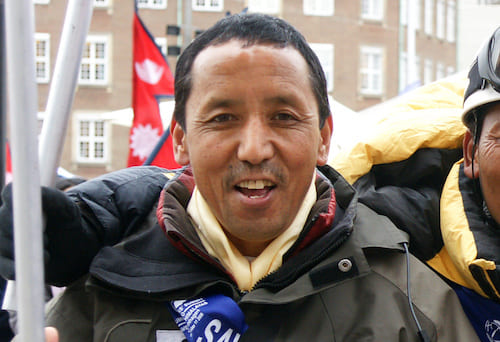
- Nepal: On May 16, Apa Sherpa (Lhakpa Tenzing Sherpa) broke his own record by summiting Everest for the 17th time.
- India: On May 15 and 16, the Indian Army Everest Expedition 2007 successfully climbed Everest from the Tibet side.
- Egypt: Omar Samra became the first Egyptian and youngest Arab to reach the summit of Everest on May 17.
- Japan: Katsusuke Yanagisawa became the oldest person to summit Everest at the age of 71 on May 22.
- UK: Kenton Cool reached the summit for the second time in a week on May 24.
- Filipina Trio: On May 17, Noelle Wenceslao, Carina Dayondon, and Janet Belarmino completed the first traverse from the North Side in Tibet to the South Side in Nepal.
- Austria: Christian Stangl set the record for the fastest ascent via the northeast ridge, completing the climb in 16 hours and 42 minutes. However, Stangl later admitted to falsely claiming a summit-climb of K2 in 2010.
53. 2008 Everest Expedition
- Saudi Arabia: Faruq Saad al-Zuman became the first Saudi Arabian to climb Everest on May 21.
- Nepal: On May 22, 2008, Apa Sherpa broke his own record by summiting Everest for the 18th time.
- Japan: Yuichiro Miura initially became the oldest person to reach the summit at age 75 on May 26, but it was later discovered that Min Bahadur Sherchan, aged 76, had submitted a day earlier. Yuichiro Miura regained the title of the oldest person to summit Everest on May 22, 2013, at the age of 80.
- India: Kalpana Dash became the first Oriya mountaineer to scale Everest on May 21.
- Mexico: Axel Duhart Villavicencio became the fourth Mexican to reach the summit of Everest.
- Canada: Laura Mallory, along with her father and two brothers, became the youngest female Canadian to climb Mount Everest in May 2008.
54. 2009 Everest Expedition
- Nepal: Apa Sherpa broke his own record once again by climbing Everest for the 19th time on May 16.
- Croatia: Darija Boštjančić and Iris Boštjančić became the first sisters to simultaneously climb Everest on May 19. Making Croatia the only country with more female than male summiteers.
- South Korea: Park Young-seok, Jin Jae-chang, Kang Ki-seok, and Shin Dong-min reached the summit of Everest via a new route on the Southwest face (Park’s Korean Route) on May 20.
- UK: Ranulph Fiennes, aged 65, became the oldest Briton to summit Everest on May 20. Achieving this feat on his third attempt.
55. 2010
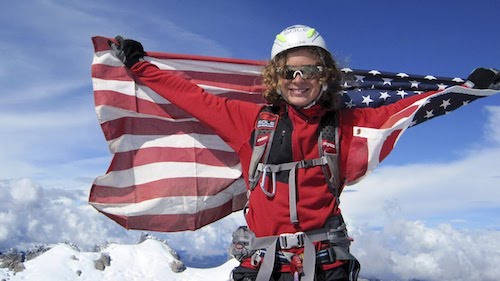
- United States: In May 2010, 13-year-old Jordan Romero became the youngest person to climb Mount Everest, sparking age limits by China. Nepal requires a minimum age of 16 with no maximum. Romero went on to become the youngest to conquer the Seven Summits at 15 years, 200 days.
- Oldest climber: Julio Bird, a 60-year-old Puerto Rican cardiologist, reached the summit of Mount Everest from both the Nepal and Tibet sides on May 17, 2010, making him the oldest climber to achieve this feat.
56. 2011
- Japan: Takashi Ozaki, aged 58, tragically succumbs to altitude sickness during his third Everest ascent.
- Nepal: Apa Sherpa sets an unmatched record with 21 successful summit ascents between May 10, 1990, and May 11, 2011. The non-Sherpa record is held by American climber and guide Dave Hahn, who reached the summit 14 times between May 19, 1994, and May 26, 2012.
- State of Palestine: Suzanne Al Houby makes history as the first Arab and Palestinian woman to conquer Everest on May 21.
57. 2012 Mount Everest Expedition
Japan’s Tamae Watanabe, aged 73 years and 180 days, surpasses her previous record as the oldest female summiteer on May 19. She achieved this remarkable feat by reaching the summit from the north side.
58. 2013

- USA: In a remarkable achievement, 16-year-old Eli Reimer became the first teenager with Down syndrome to reach Everest Base Camp on April 1. The expedition aimed to raise funds for the Elisha Foundation, a non-profit organization supporting individuals with disabilities.
- Japan: At the age of 80, Yuichiro Miura reclaimed his title as the oldest person to reach the summit on May 22, 2013.
- Nepal: Phurba Tashi Sherpa matches Apa Sherpa’s impressive record of 21 successful summits of Mount Everest.
- India: Arunima Sinha made history on May 21, 2013, by becoming the first female amputee to conquer Mount Everest.
59. 2014 Everest Expedition
- 2014 Mount Everest avalanche claims sixteen lives, becoming the second deadliest disaster in Everest’s history. Subsequently, the majority of expeditions from the Nepalese side for the year are called off.
- India’s Malavath Purna, aged 13 years and 11 months, breaks records as the youngest woman to summit Everest on May 25, ascending from the north side.
- Arne Vatnhamar of the Faroe Islands scales Mount Everest on May 25, becoming the first Faroese to achieve this feat.
60. 2015 Everest Expedition
- In April 2015, a devastating earthquake in Nepal triggered an avalanche on Mount Everest. The quake claimed the lives of at least 18 individuals at South Base Camp. An Indian Army mountaineering team recovered 18 bodies, while many others were injured, missing, or trapped at higher camps. It was estimated that between 700 and 1,000 people were on the mountain at the time.
- In August 2015, Everest was reopened to climbers, but only one climbing permit was issued to Japanese mountaineer Nobukazu Kuriki. Despite his previous attempts, Kuriki turned back 700m below the summit in October during the autumn post-monsoon season. His previous efforts had resulted in the loss of all his fingers to frostbite.
61. 2018 Busiest Year on Everest
The expeditions launched during 2018 amounted for one of the busiest years on Everest. In 2018, approximately 800 individuals successfully summited Mount Everest. This set a new record for the highest number of summits in a single year compared to 2013, during which 667 people reached the peak. To see just how many people have climbed Mount Everest, check out our blog with up-to-date information as of 2023!
62. 2020
In March 2020, the Nepalese government suspended all climbing permits for Mount Everest and other peaks in response to the COVID-19 pandemic. The Chinese government had already closed its side of Everest.
In April 2020, it was reported that a group of Chinese climbers were attempting to summit Mount Everest and were expected to reach the advanced base camp. Only Chinese climbers were allowed during the spring season.
63. 2021
In response to the COVID-19 pandemic, the Chinese side of Everest remained closed to foreigners. However, the Nepalese government resumed issuing climbing permits with a total of 408 permits issued. To manage the number of climbers and avoid overcrowding, the Nepalese government implemented restrictions on the maximum number of climbers allowed on Everest.
During the climbing season, there were several COVID-19 outbreaks among climbers. Concerns were raised as the Nepalese Department of Tourism had not established adequate rules or regulations to prevent outbreaks at the South Base Camp. The Nepalese government did not officially acknowledge these cases or outbreaks, and there were restrictions on photography. Ultimately leading to suspicions of a cover-up.
In May 2021, the Chinese government announced plans to create a “separation line” at the peak of Everest. This was in hopes of preventing the spread of COVID-19 from climbers coming from the Nepalese side.
During the 2021 season, a total of 534 people successfully reached the summit of Everest, including 195 members and 339 sherpas. Unfortunately, four individuals lost their lives during the climbs.
64. 2022
Foreign expeditions on the north face of Everest were once again prohibited by the Chinese government. Only one commercial expedition and one scientific expedition were allowed, with the scientific team installing weather stations on the north face. On the Nepalese side, 325 climbing permits were issued, which was a significant decrease from the previous year. Efforts were made to attract more foreign climbers, including removing COVID testing requirements for vaccinated travelers upon arrival in Nepal.
Interestingly, both the Chinese and Nepalese sides installed new weather stations on Everest, unaware of each other’s plans. These stations were placed at similar altitudes, with the intention to replace a malfunctioning Nepalese weather station.
Towards the end of the season, favorable weather conditions prevailed on Everest due to a stalled high-pressure system. The warmer, drier, and less windy conditions contributed to a higher summit success rate of 70%, exceeding the usual average.
In the 2022 season, a total of 690 individuals reached the summit of Everest. Among them, 640 climbers ascended from the south (240 members and 400 sherpas), while 50 climbers ascended from the north. Three individuals lost their lives during the climbs.
